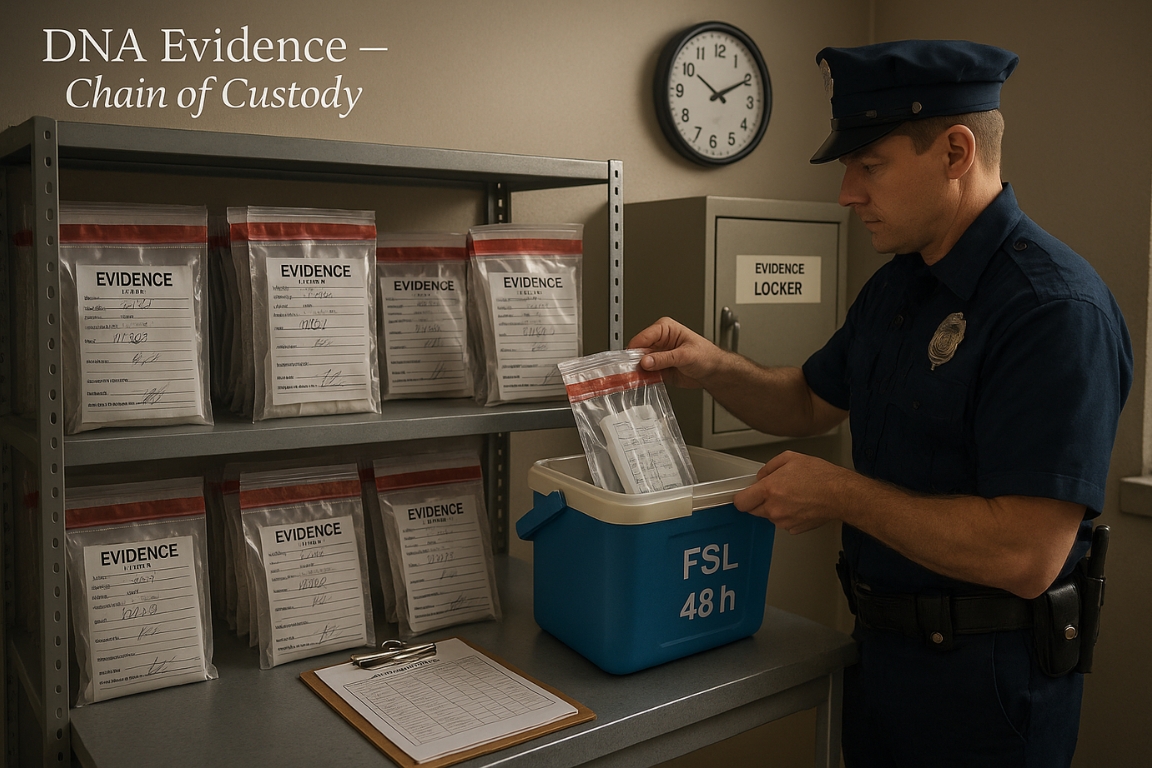The Supreme Court, in Kattavellai @ Devakar v. State of Tamil Nadu, issued uniform guidelines for handling DNA samples in criminal cases.
Why the Directions Were Needed
- In the Devakar case (rape, murder, and robbery), vaginal swab samples were sent late to the Forensic Science Laboratory (FSL).
- The chain of custody was unclear, raising doubts about contamination.
- Different states follow different procedures, creating inconsistency.
- To ensure uniformity and prevent tampering, the Court stepped in despite “Police” being a State subject.

Collection and Documentation
- DNA samples must be carefully collected, packaged, and labeled with details like FIR number, date, statute sections, investigating officer, and police station.
- The collection record should carry the signatures of the medical professional, investigating officer, and independent witnesses.
Transportation to FSL
- The investigating officer must transport the samples safely to the concerned FSL within 48 hours.
- If there is any delay, it must be recorded with reasons, and preservation steps must be ensured.
Storage During Trial/Appeal
- Once sealed, samples cannot be opened, resealed, or altered without the express order of the trial court.
Chain of Custody Register
- A register documenting every stage from collection to the final verdict must be maintained.
- It should be part of the trial record, and any lapses must be explained by the investigating officer.
Supreme Court’s Stand on DNA Reliability
- Anil v. State of Maharashtra (2014): DNA evidence is reliable if lab procedures follow strict quality control.
- Manoj v. State of Madhya Pradesh (2022): DNA report rejected as the sample was from an open area and possibly contaminated.
- Rahul v. State of Delhi (2022): DNA evidence discarded due to a two-month delay in police custody, raising doubts of tampering.
- Court stressed both collection outside labs and analysis inside labs must follow scientific standards.
Nature of DNA Evidence
- DNA can be extracted from blood, hair, semen, saliva, bone, or skin.
- A match shows biological origin but is treated as opinion evidence under Section 45 of the Evidence Act (now Section 39 of the Bharatiya Sakshya Adhiniyam, 2023).
- Alone, it is not conclusive proof for conviction; it must be corroborated with other evidence.
Conclusion:
The Supreme Court’s directions strengthen the reliability of DNA evidence by ensuring strict collection, preservation, and custody standards. While DNA is a powerful investigative tool, it remains supporting evidence and not sole proof in criminal trials.





